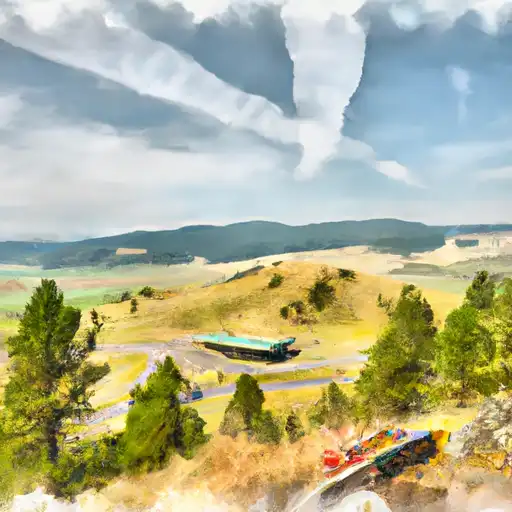2026-01-02T12:00:00-07:00
...SNOW AND WINTRY MIX TODAY... .This set of Winter Weather Advisories has been issued due to concerns for mixed precipitation types given the recent colder weather and subsequently cold road temperatures. Do not expect significant or major accumulations amounts of ice and/or snow. Rain or wet snow falling on frozen surfaces can easily become very slick and exacerbated by compaction and/or frictional heating from tires on roadways. * WHAT...Mixed precipitation expected. There is a likelihood of minor to moderate winter weather impacts. Additional snow accumulations up to one inch and ice accumulations up to five-hundredths of an inch. * WHERE...Georgetown Lake, MacDonald Pass, Highway 12 Garrison to Elliston, Homestake Pass, and Butte. * WHEN...Until noon MST today. * IMPACTS...For MINOR winter weather impacts, expect a few inconveniences to normal activities. Use caution while driving. Winter traveling conditions. The hazardous conditions could impact the Friday morning commute, especially over higher passes.
Summary
Standing at an impressive elevation of 10,607 feet, it offers breathtaking panoramic views of the surrounding landscape. This mountain is a part of the Anaconda Range and is situated within the Deerlodge National Forest. Its vast expanse covers an area of approximately 50 square miles, making it a significant feature in the region.
During the winter season, Mount Haggin experiences a diverse snowpack range due to its high elevation and proximity to the Continental Divide. Snow accumulation can vary greatly, with an average annual snowfall of around 200 inches. This makes it a popular destination for winter sports enthusiasts, including skiers and snowboarders.
Mount Haggin is also known for its contribution to the local hydrology. Several creeks and rivers receive runoff from the mountain, including the North Fork of Flint Creek and the East Fork of Rock Creek. This creates an abundant water supply for the surrounding area, supporting diverse wildlife and vegetation.
In terms of history, Mount Haggin is named after James Haggin, a prominent and influential figure in Montana's mining industry during the late 19th century. There are no specific legends or lore associated with this mountain, but its name serves as a testament to the rich mining heritage of the region.
Sources:
- "Mount Haggin." Peakbagger, peakbagger.com/peak.aspx?pid=23975.
- "Mount Haggin." Montana Wilderness Association, wildmontana.org/wild-life/mount-haggin/.
Weather Forecast
Regional Streamflow Levels
191
Cubic Feet Per Second
32
Cubic Feet Per Second
282
Cubic Feet Per Second
323
Cubic Feet Per Second
Area Campgrounds
| Location | Reservations | Toilets |
|---|---|---|
 Spring Hill Campground
Spring Hill Campground
|
||
 Spring Hill
Spring Hill
|
||
 Seymour Creek
Seymour Creek
|
||
 Lower Seymour Lake Campground
Lower Seymour Lake Campground
|
||
 Warm Springs
Warm Springs
|
||
 Seymour Creek Campground
Seymour Creek Campground
|
